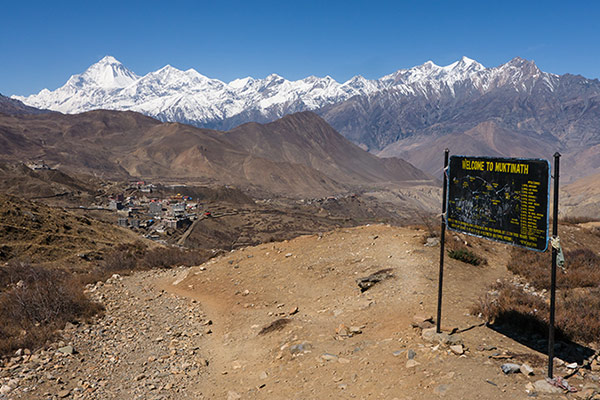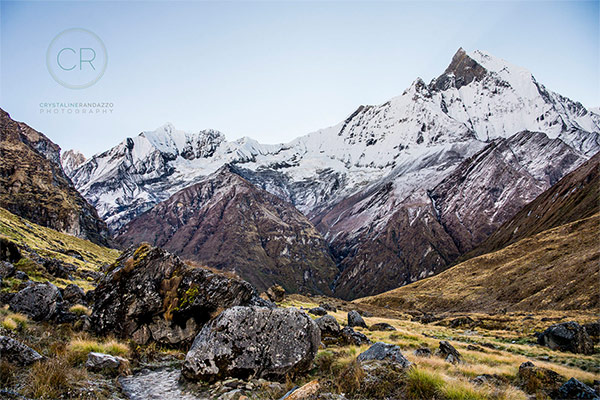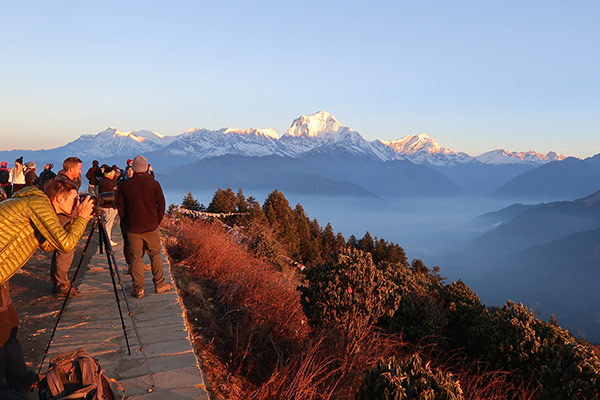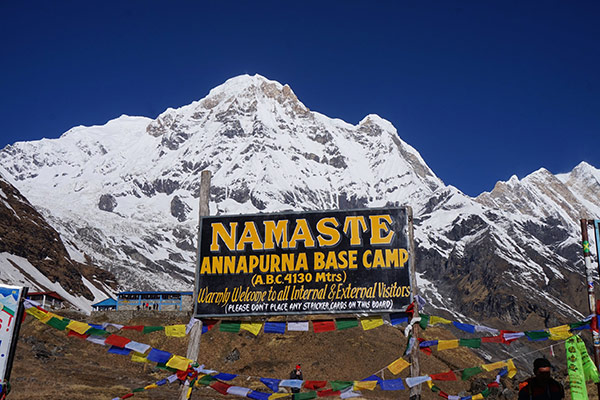- Trekking
- Expedition in Nepal
- Inbound Tours
- Outbound Tours
- About Us
- Contact us
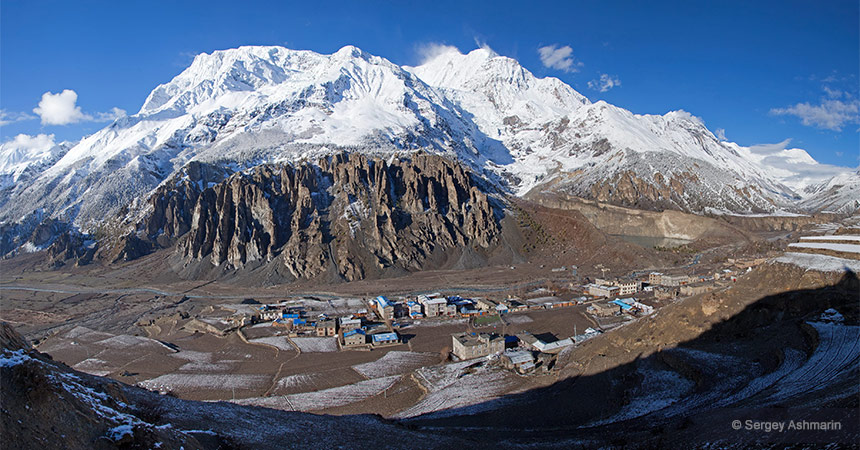
The Annapurna Circuit Trek is a cherished classic trekking route in renowned Annapurna Region. Because it circles the Annapurna massif, the Annapurna Circuit Trek is also known as the Annapurna Round Trek. This trek is one of the most popular trekking routes among trekkers due to its diverse landscape and cultural and easy accessibility.
One of the highlight of the Annapurna Circuit is the Thorong La Pass (5416m/17769ft) also famed as the world’s longest mountain pass. From this vantage point, panoramic vistas of the Himalayas stretch before you, including majestic peaks like Mt. Dhaulagiri (8,167m), Mt. Manaslu (8,163 m), Mt. Machhapuchhare (6,998m), Mt. Annapurna I (8,091m), Mt. Annapurna II (7,937 m.), Mt. Annapurna III (7,555m), Mt. Annapurna IV (7,525m), Mt. Annapurna south (7,219m), Mt. Nilgiri (7,041m), Mt. Lamjung Himal (6,986m), Mt. Hiunchuli (6,441m), and Tilicho Peak (7134m), Tukuche Peak (6,920m), and more.
10 to 15 days Annapurna Circuit Trek starts counter-clockwise from Besisahar following the Marshyangdi River and takes you through four regions of Nepal: Lamjung, Manang, Mustang, and Myagdi which includes captivating villages like Jagat, Dharapani, Chame, and Pisang. This trek weaves through both Buddhist and Hindu villages, each boasting their sacred sites. Then we ascend to the highest point of our trek, Thorung La (pass), at 5416m (17,769 feet) where the breathtaking panorama awaits us. After crossing the Thorong La Pass, you descend to Muktinath, a significant pilgrimage site for both Hindus and Buddhists. We will then take a drive from Muktinath to Tatopani, which is famous for its natural hot springs. On the final day of our trip, we will again take a drive to Pokhara.
The Annapurna Round Trek is for those trekkers who desire to experience adventurous excursion in the Nepali Himalayan Annapurna region while appreciating the diverse scenery, landscape, and climate zones.
Upon your arrival in Kathmandu, you will be greeted at the airport and transferred to your hotel. Later in the evening, we will have a pre-departure meeting regarding the details of your trip.
In the morning we will pick you from your hotel and then drive to Besisahar and then to Bhulbhule. The scenic drive takes us westwards, following the Prithvi Highway. During the drive, we follow Trisuli and Marshyangdi Rivers and pass many picturesque villages that dot the landscape. In the distance, Mt. Manaslu and the Annapurna Mountain ranges grace the horizon. Upon completing the permit registration process at the check post, we commence our trek from Bhulbhule towards the enchanting destination of Ngadi. The trail follows through jungle and terraced field along the Marsyangdi river to reach Ngadi.
After breakfast we embark on our second day of trek to Chamje. Following the Marshyangdi River, our trail takes us through a lovely forest of rhododendron, oak, pine, and maple trees. Enroute we cross several suspension bridges, continue past rice paddies and waterfalls. Once we reach the cliff at Jagat, we can see the Marsyangdi River flowing below and rugged hills all around us. Continuing further we will reach Chamje.
Opting for the less trodden path, we diverge from the road and venture onto a trekking trail that unfolds before us. Today’s trail is mostly ascending. Following closely the course of the Marsyangdi River and after a steep ascend we enter Manang Region at Tal Village. We hike past barley, rice, and potato fields as we leave Tal, and the rugged trail pass through the forested villages of Karte and Dharepani before arriving at Bagarchap. As we approach Bagarchap, a vibrant Bhotia village, adorned with vibrant prayer flags, you’ll get a close-up glimpse of Annapurna II, Lamjung Himal (7,925m), and other peaks.
Continuing our trek from Bagarchhap, we trek ahead along the banks of the Marshyangdi River, our path weaving through a tapestry of lush forests adorned with pine, oak, fir, and maple trees. En route, we can enjoy spectacular views of the Annapurna ranges and Manaslu range. Our route leads us through ancient Tibetan villages before arriving at our destination Chame. Chame is a significant village that serves as the administrative center of the Manang Region. When we get in Chame, we can take a little break in a small hot spring.
Upon departing from Chame, a noticeable transformation in the landscape unfolds before your eyes. Today’s walk is generally flat with a few ascents. We will pass through charming apple orchards at Bhratang. This pleasant landscape leads you further into a steep, yet narrow valley enveloped by the embrace of dense woodland. As you continue your ascent, the breathtaking expanse of Dhikur Pokhari unveils itself, treating you to awe-inspiring views of Pisang Peak (6,091m) and Annapurna IV. Beyond Dhikur Pokhari, a pivotal junction arises, presenting you with two distinct routes: one leading to Lower Pisang and the other to Upper Pisang. Opting for the less frequented path, you venture toward Upper Pisang, a destination elevated both in altitude and in its offering of unparalleled vistas. We will stroll around the village and visit the monastery.
Today’s hike presents a somewhat challenging terrain as we head to Manang taking upper trail towards Ghyaru. The initial half-hour will take us through a serene pine forest, where we’ll come across a small pond. Crossing a suspension bridge, we then embark on a steep ascent lasting approximately two hours, leading us to the captivating village of Ghyaru. From Ghyaru’s vantage point, we’re treated to a splendid panorama encompassing the village itself, a Tibetan settlement, and an ancient monastery. The view extends to Annapurna III, Gangapurna, Tilicho Peak, Khangsar Kang, and the charming Pisang Village. Subsequently, our trail meanders in a zigzag pattern for roughly two hours, guiding us to Ngawal village. We then continue our trek to Manang, a large Tibetan village with numerous stupas and monasteries, nestled amidst a mountainous backdrop. Towards the northeast, the four Chulu peaks (ranging from 6,038m to 6,854m) stand tall, while Ganggapurna (7,454m) dominates the southwestern skyline.
Today we will rest and acclimatize to avoid the risk of altitude sickness. After having breakfast we will go for a short hike to Chhongar View Point which takes around 3 – 4 hours. After spending some time and enjoying the surrounding views, we hike back to Manang village. In the afternoon, you can stroll around the village or simply rest at your guesthouse.
After a well deserved rest at Manang, we continue our trek by crossing a stream and climbing to Tengi village. Continuing our upward journey, we ascend past the Marshyangdi River, entering the scenic Jarsang Khola Valley. The alteration in altitude is evident through the transition in vegetation, characterized by scrub junipers and alpine grasses. As we continue our trek, the trail gradually ascends, leading us to the quaint Gunsang Village. Crossing a small river via a sturdy wooden bridge, we reach our next destination, Yak Kharka. This is where the magic of sunset and sunrise unfolds against the backdrop of the magnificent Annapurna Range mountains.
Leaving Yak Kharka behind, our path leads us upward to a ridge. From there, we descend and make our way across the Marsyangdi river. Our trek continues along a narrow trail that gradually descends, leading us to Thorung Phedi, situated at the base of Thorung La pass. For better acclimatization and Mountain View, we will take a short hike to high camp.
Today marks the pinnacle of our Annapurna Circuit Trek, a day both challenging and deeply rewarding. An early rise is imperative to ensure favorable weather conditions as we embark on our ascent. The path leading to high camp is steep, but the terrain gradually eases after high camp, even though the altitude continues to pose a challenge. Upon reaching the summit, a spectacular panorama unveils itself, enhanced by fluttering prayer flags that adorn the landscape. Towering peaks such as Annapurna, Gangapurna and Tibetan Himalayan Peaks dominate the horizon. After admiring the stunning views we descend towards Muktinath. The initial descent is gentle, transitioning into steeper slopes as we progress further. As Muktinath draws closer, the path softens once again, guiding us through grassy slopes. En route to Muktinath, the majestic Mt. Dhaulagiri (8,167m), the seventh highest mountain emerges into view and Nilgiri (6,940m) captures our awe and admiration. Muktinath is a sacred temple worshipped by both Hindus and Buddhist people. The main attraction of this temple are Jwalamai temple which has an eternal flame and 108 water spouts, pouring forth holy water.
We end our trek at Muktinath and take a drive all the way passing through villages such as Kagbeni, Jomsom, Marpha, Lete before reaching Tatopani. Tatopani means “hot water” in Nepali. You can soak in a natural hot spring to relieve your aching body.
On the final day of our trip, we again drive back to Pokhara. Upon arrival at Pokhara you can explore the charming lakeside area which is a bustling hub filled with restaurants, shops, and cafes, all set against the backdrop of the stunning Phewa Lake. You can take a leisurely stroll along the lakeshore, enjoy the scenic views, or simply relax and take in the peaceful ambiance.
